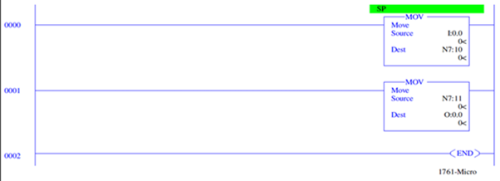Question:
When trying to read input files (I1) or to write in output files (O0), there are communication errors, and the following error record can be seen in the driver’s log:
slc_logical_read error: AB_command returned error in status = 10!
Note: The affected tags are the ones referencing files O0 or I1. If the tags are set up via N and B parameters, with no hexadecimal addressing, for example, they will be the tags where N1’s and/or B1’s values are 0 or 1, plus the PLC address multiplied by 1000. This addressing method is the former one in this driver, and will be used as the basis for the tags addressing in this article. For the purposes of this article, the PLC address will also be set as null. For information on other address methods (hexadecimal and strings), please refer to the driver’s manual.
Solution:
Depending on the device’s model or version, the input/output files addressing can have different numeric formats.
We recommend mapping the input and output points for integer types at the PLC’s ladder, so that the Elipse driver does not have to access directly all input/output files.
The figure below shows an excerpt of a sample application, which maps I:0.0 input for element N7:10, and O0:0.0 output for element N7:11.

Notice that the first and second RUNGs use MOVE functions to map the input card bits (I:0.0) for integer file elements (N7:10), and the second one uses MOVE instruction to map position N7:11 for the output card bits (O:0.0). That is, these values are transferred on every PLC cycle, so that the driver’s user will only need to access the values N7:10 and N7:11 (tags N1=7, N2=7, N3=10, N4=0 and/or N1=7, N2=7, N3=11, N4=0), with no need to access directly bits I:0.0 or O:0.0 (tags N1=1, N2=1, N3=0, N4=0 and/or N1=0, N2=0, N3=0, N4=0).
In addition to simplifying the addressing process, the mapping technique makes the application’s maintenance simpler, because in the event of input/output exchange/burning, you can easily map the application to use alternative I/O points, altering only one ladder’s RUNG while keeping the rest of the application unaltered.
